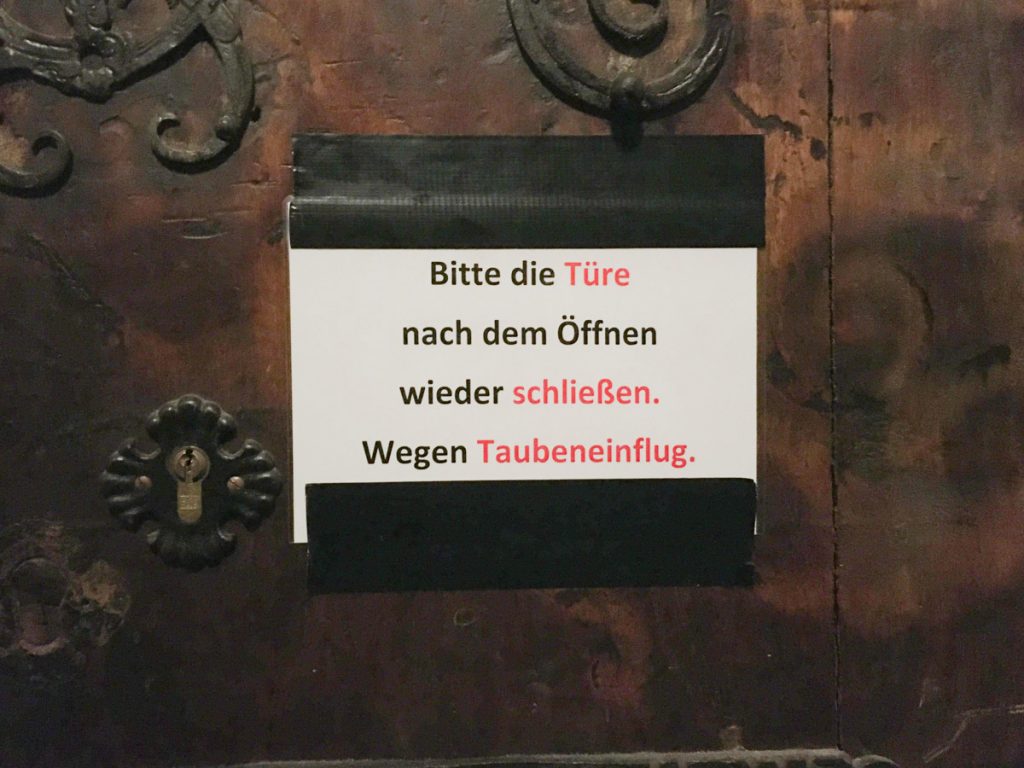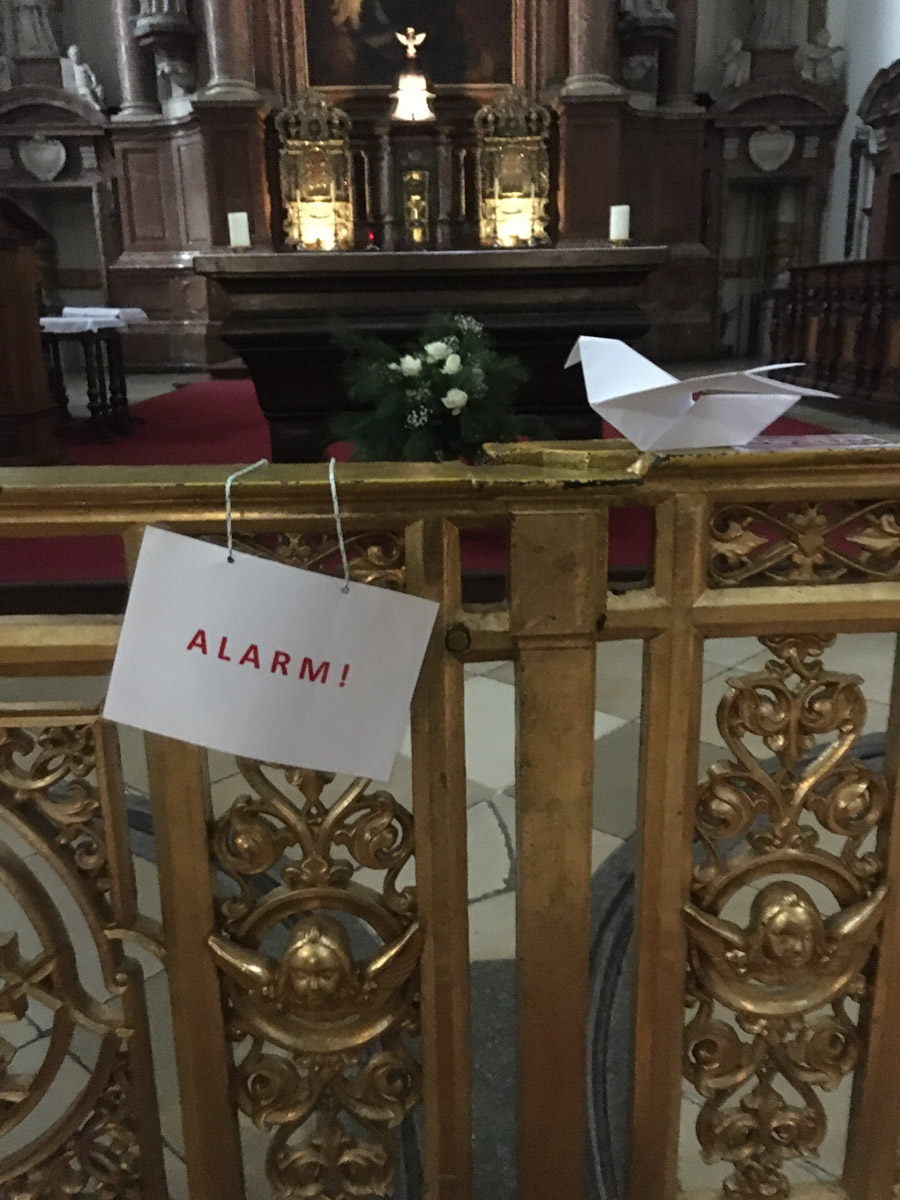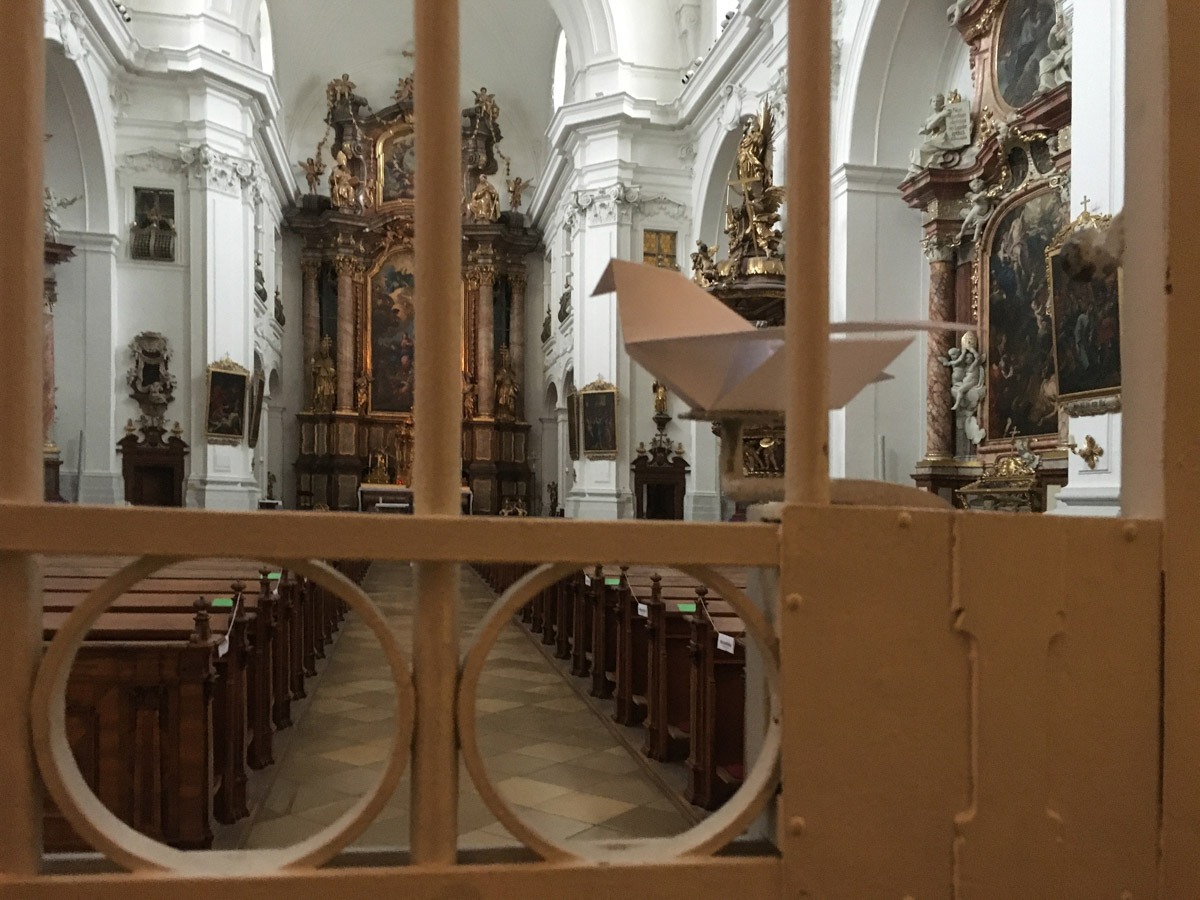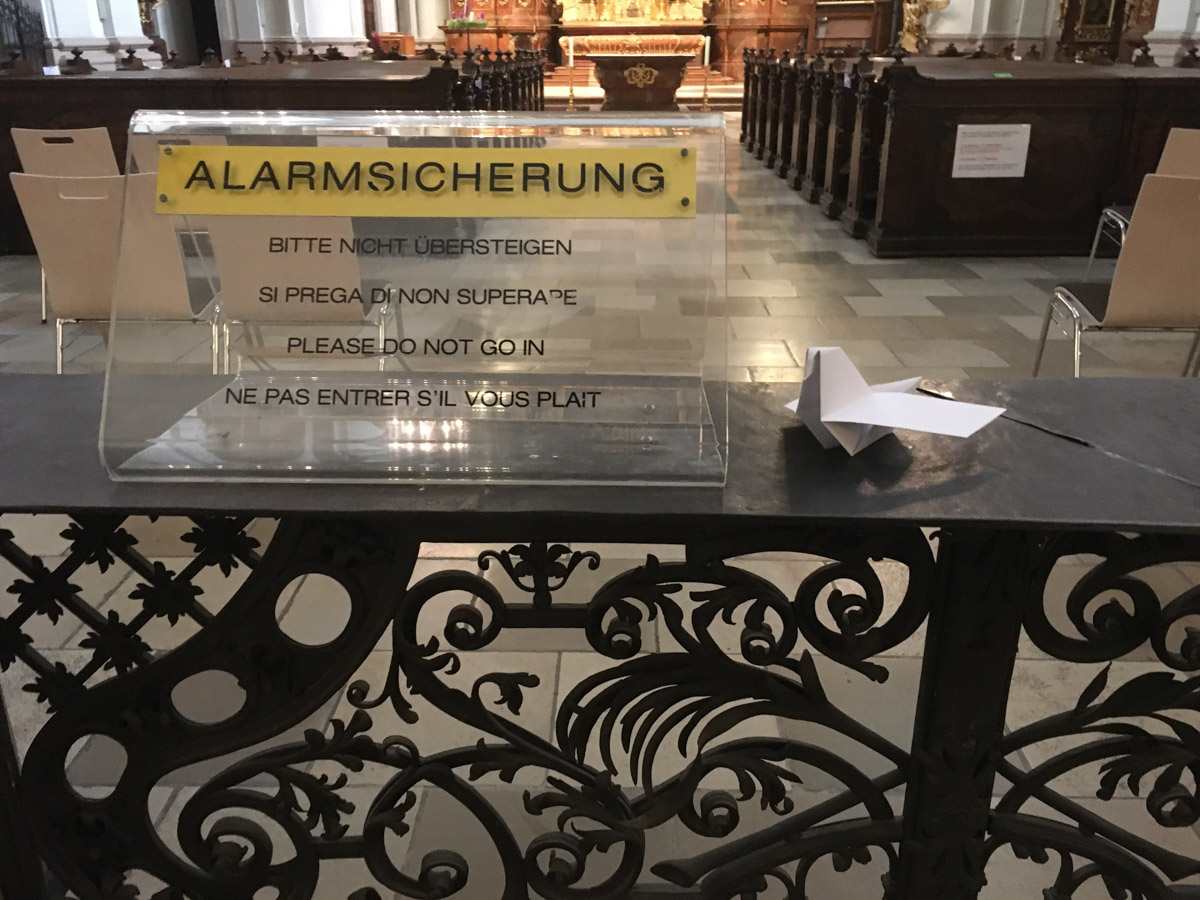“Keep doors closed. Pigeons coming in.” – Church
“Keep doors closed. Pigeons coming in.” – Church
PROJECT BY Johanna Brunner, Sarah Dorfer, Valentina Hölzl,
Maria Strieder & Vinzent Wallner.
Thresholds in Churches – Observations
Arriving at the Carmelite Church in the early morning, we could enter the building, but after a few steps, we found ourselves in front of a locked gate. Installed to protect the church against vandalism or to separate the people from the clergy, in the current corona situation, these iron barriers struck us as a symbol of the separation of “healthy” and “sick”, protection of sorts of church visitors and clergy from the virus. The corona situation – distancekeeping, fear of contagion –seemed all the more present to us in the face of these architectural boundaries in places of silence and contemplation. Currently, these thresholds are supplemented by further barriers: signs with prohibitions and rules, such as to wear a face mask or to keep your distance. Especially the replacement of holy water with a bottle of disinfectant (or the combination of both) intensified the impression of an intensified demarcation. At the same time, the side-by-side of the liquids seemed to us like a condensation of the old and new rituals regulating the entrance of social andsacred spaces.

The Pigeon in the Church –Observations
“Please close this door behind you. Pigeons coming in.” – The sign on the entrance bemused us: To exclude the dove from the church seemed like a contradiction. As we all know, the bird plays a central role in Christian symbolism – not least, it represents the Holy Ghost himself. Apart from that, the pigeon has positive and negative connotations: it is a welcome messenger, but also a nuisance and carrier of disease. The caution sign inspired our “contagious” object. We developed the idea to “infect” the rooms of the churches with origami pigeons.

Pigeon Post Whisper Game – Implementing
“Social Contagion” Research on the creation of borders within churches was the basis for the intervention “Pigeon”. We studied the use of iron bars and barriers such as rood screens that functioned as visual barriers and marked a (social) division of clergy and laymen. Moreover, we examined the figure of the dove in its symbolic and cultural meaning: from its role as a sign of hope in the biblical deluge, the origin of the symbol of peace,”dove with olive leaf”, its use as an offering, up to its function as a communication medium in military situations or as a drug courier (pigeon post), and finally to pigeons as carriers of disease and a danger to public health.
The research confirmed our first contradictory impressions: a convergence and thus a shift or intensification of borderlines. Finally, to make tangible the current fear of infection, we folded the white paper doves and left them on the gates and/or choir screens of several churches in Linz. When we returned later that evening, the pigeons had been removed or taken away – as if the paper birds did not belong to this “pure” place: unwanted intruders –carriers of disease– embodying the danger of the coronavirus. We, however, prefer to imagine: Visitors read the pigeons as good news and joyfully picked up the “pigeon post”.





